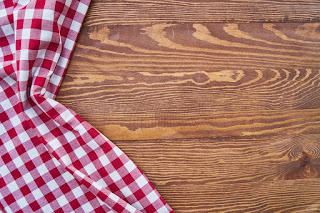Textile Composites
Composites
A composite can be
defined as a material which consists of combination of properties that no
single material can perform or provide. Composites are materials which have
dissimilar contents but they are used to perform a task which neither of the
material can perform alone.
A composite consists
of two elements namely, a Reinforcement material and Matrix (Binder). For
example, consider human body where the bones act as reinforcement and the flesh
acts as matrix. There are different types of composites, Metal-metal,
metal-ceramic, metal-polymer, polymer-polymer etc.
TEXTILE COMPOSITES
Textile composites
are made up of textile reinforcement structure and the matrix material
Reinforcement structures consists of fibers,
yarn or fabrics (can be knitted, woven or non- woven) Reinforcement materials
are also referred as Textile performs and they can be in various shape and
size.
Matrix materials can be thermoset or
thermoplastic, polymer, metal or ceramic
Textile composites can be flexible or rigid.
Types of Textile Composites
- Textile composites are broadly classified as flexible textile composites and rigid textile composites
- Flexible textile composites consists of conveyor belts, automotive tyres and coated fabrics
- The main characteristics of Rigid textile composites are that thy have, high strength, high stiffness, low density, corrosion resistance and high temperature resistance
Advantages of Textile Composites
- They can be Anisotropic: Anisotropic material shows different properties along with different directions depending upon the orientation of fibers, yarn or fabrics
- High strength to weight ratio than metal composites
- It allows near net-shape manufacturing reducing cost an material waste considerably
Applications of Composites
- Composites replaced metals and metal alloys in the automotive industries
- Majorly used in aerospace ( In parts of commercial aircrafts)
- In military (Aircrafts, rocket components, missiles etc)
- Manufacturing of electronics (Electronic boards)
- Recreation purpose such as sporting goods
MATRIX MATERIALS
Functions of Matrix materials
- The main function of matrix is to bind the fiber material together and hold them in particular position giving it a structural stability
- To provide strength to the composite material
- To protect the fiber from environment effects and handling
- To transfer forces and stresses acting on the boundaries of the composite structure
Matrix materials for textile composites
- Thermoset resins
- Thermoplastic resins
Thermoset Resin: The most widely used
thermoset resins are Epoxy and polyester. The advantage of polyester resins are
it has low costs, low viscosity and low curing temperature. The disadvantages
are that it has poor strength and poor impact performance.
Advantage of Epoxy resin: It is ideal for
higher temperature applications, broad range of physical and mechanical
properties.
Thermoplastic Resins: Thermoplastic resins
are classified commodity thermoplastic and Engineered thermoplastic
Commodity Thermoplastic: Offers less
resistance to high temperature. For example polyethylene, PVC, polypropylene.
Engineered Thermoplastics: They are
temperature resistant and superior to epoxy, offer toughness and improved hot /
wet resistance. Example PEEK (polyetherether ketone).
REINFORCEMENT
MATERIAL
The reinforcement materials include S-glass,
R-glass and wide range of carbon fibers, ceramic fibers etc. There are
different forms of reinforcement materials such as long or continuous fibers,
short fibers, spheres.
Classification of Textile Reinforcement
Structures
They are classified under following
categories:
- Method of manufacturing (woven, knitted or braided)
- Integration of structure (Laminated or integrated)
- Packing density (open or solid)
- Fiber continuity (continuous or discontinuous)
- Direction of reinforcement
Preform:
Preform is fibrous reinforcement formed into
shape before placing into mold that is, it given a pre-shape. It closely
resembles final part configuration.
The multi-ply stitched fabric does not
perform unless it is shaped to the nearest final configuration
They are made using rovings, chopped or woven
unidirectional reinforcement material form held in place by the means of
binder.
Applications: Used in corner fittings and
square box to replace metal parts
Profile Preforms:
Profile preforms are fibers directly
orientated in the fabric’s thickness and width directions
They strengthen load bearing structural
members, provides stiffness and joins the elements
In profile preforms contains three sets of
yarn in mutually perpendicular XYZ orientations and desired cross section
profile
Applications: Aerospace, automotive, building
/ construction applications as well as certain medical products
Prepegs:
Prepegs is the textile structure that is
impregnated with uncured matrix resin
Prepegs forms unidirectional and
multidirectional tape, woven fabric. Fibers used for prepegs are graphite,
fiber glass and aramid.
Hot melt or solvent coating process are used
for prepeg fabrics
To obtain uniform thickness prepeg are
calendared and is suitable for hand and machine lay up processes.






0 Comments